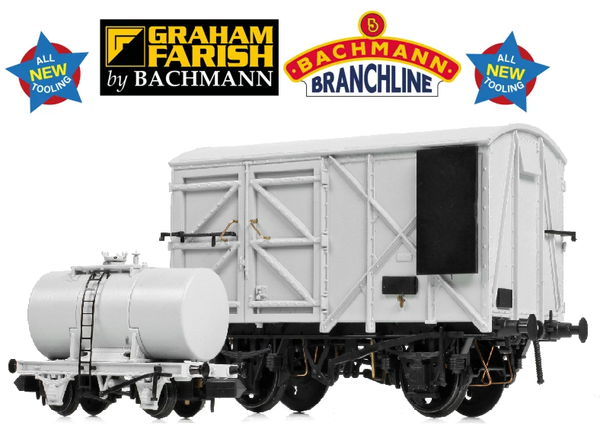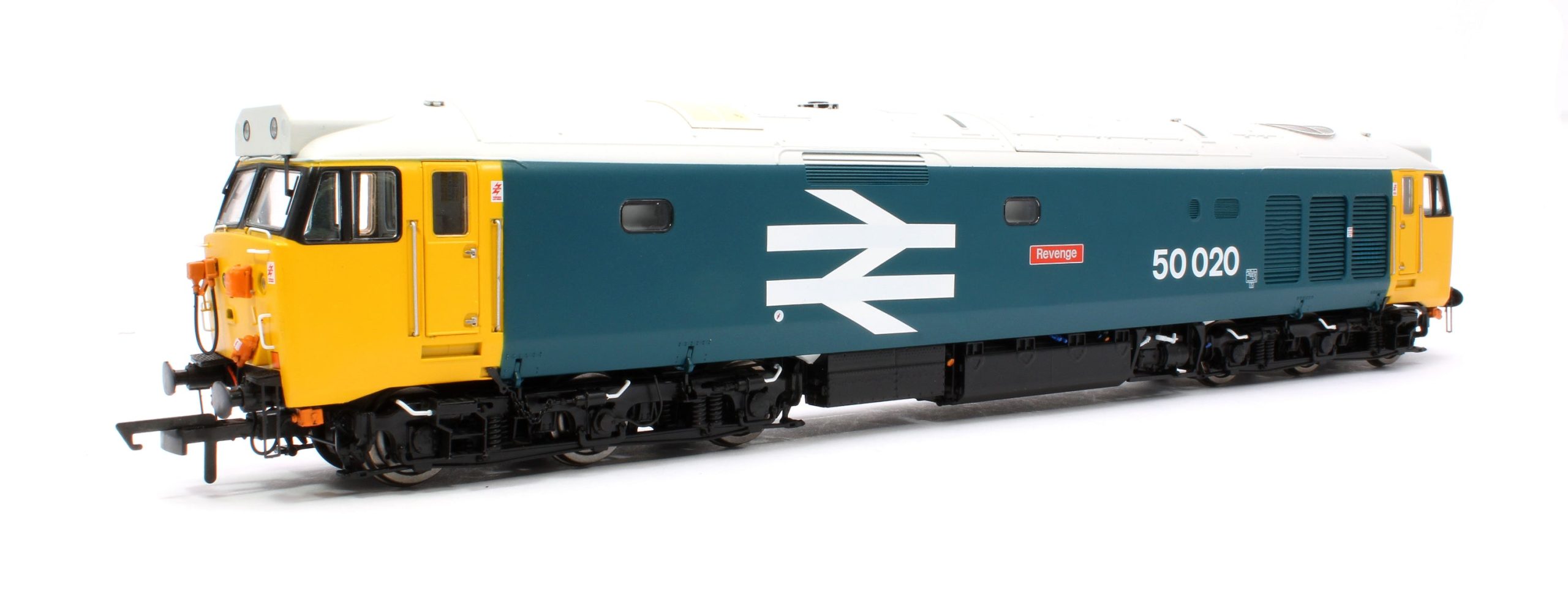Bachmann announce two brand new tooling projects which have been revealed today at the London Festival of Railway Modelling!
In a slight deviation from the quarterly British Railway Announcements, these new tooling projects have been revealed after reaching an advanced stage of development, with Engineering Prototypes on show this weekend.
Bachmann won’t be revealing item details, prices etc. for these new projects until the next British Railway Announcements.
‘Palvan’ joins the Bachmann Branchline Rolling Stock Fleet
Bachmann Europe Plc revealed that it is developing models of the BR 12 Ton ‘Palvan’ Pallet Van for its Bachmann Branchline range – the first time models of these distinctive vehicles have been produced in OO Scale.
Engineering Prototypes were available for inspection during the Alexandra Palace event, showcasing several variants that have been incorporated into the tooling suite.
By the early-1950s the use of wooden pallets and forklift trucks to load and move goods had become well established, however the doors of standard railway wagons were not wide enough to accommodate the loading of a pallet. Aware of this new trend, British Railways experimented with modifying GWR and LMS designs before creating its own design, Diagram No. 1/211 of 1954, for the Pallet Van or ‘Palvan’. On the left on each side was a door with an opening of 8ft 6in. – as opposed to the 5ft opening of a standard van door – allowing pallets to be loaded on either side. The body was made from plywood, with distinctive bracing and bracketry making the ‘Palvans’ easily distinguishable in a train of mixed vans. Like other BR ‘standard’ types, the chassis featured a 10ft wheelbase with a total length of 17ft 6in.
Orders were placed for almost 2,400 wagons in 1954, with construction continuing until 1961. The ‘Palvans’ suffered with uneven running gear wear caused by uneven loading and many were withdrawn before the 1970s. Some entered private ownership, including twenty with Scottish whisky maker Johnnie Walker.
The new Bachmann Branchline tooling allows a range of ‘Palvan’ models to be produced, depicting the various differences incorporated in the different build lots and during their service lives. The first wagons were built with Morton brakes, acting upon four wheels with the associated tie-bar, and with oil axleboxes. Later lots had eight shoe clasp brakes, some of which were fitted with oil axleboxes and others roller bearings, both combinations are catered for with the Branchline tooling. Buffers are of metal construction and can be of the spindle, self-contained or OLEO type, whilst wheels may be disc, 3-hole disc, spoked or split-spoked – all of metal construction – depending on the specific van being modelled. Advertising boards also feature where appropriate.
New Anchor-Mounted Tank Wagons from Graham Farish
14 Ton and 20 Ton Class A and Class B Anchor-Mounted Tank Wagons to be produced in N Scale for the first time. Engineering Prototypes were displayed at the Alexandra Palace event, showcasing several variants that have been incorporated into the tooling suite.
Anchor-Mounted Tank Wagons were conceived in the mid-1940s, the design being agreed between the private operators, the Petroleum Board and the railway companies. Rather than the timber saddle, cradle and wire hawsers employed on earlier wagons, the new design used a central anchor mechanism to secure the tank to its chassis. With many older wagons becoming available as surplus following World War Two, the Anchor-Mounted Tanks were not built in great numbers until the early-1950s when large orders were completed for Shell Mex & BP. Smaller orders were built for operators such as Esso, Fina, Mobil and Regent. With the introduction of larger, vacuum braked tank wagons during the late-1950s, the Anchor-Mount design became obsolete, and the final wagons of this type were built in 1963.
The new Graham Farish models depict both the Class A and Class B wagons, with options to include the bottom outlet pipe and associated handwheel mounted on top of the tank, with or without the steam heating inlet valve, and with a straight or cranked air vent. The top catwalks and filler can be depicted in their central position or offset, whilst these wagons can also be modelled with or without the ladders giving access to the catwalks – where fitted these are constructed from fine metal etches. As standard, each model features separately fitted brake gear and brake levers, along with the filler cap which includes the distinctive securing clamps. On the prototype the underframe was constructed from metal section, and this is replicated on the model affording an unobstructed view through the frames when observed from above. Standard N scale couplings are fitted via NEM pockets and, as with all Graham Farish models, metal wheelsets – with either spoked or 3-hole disc wheels – complete the model.

